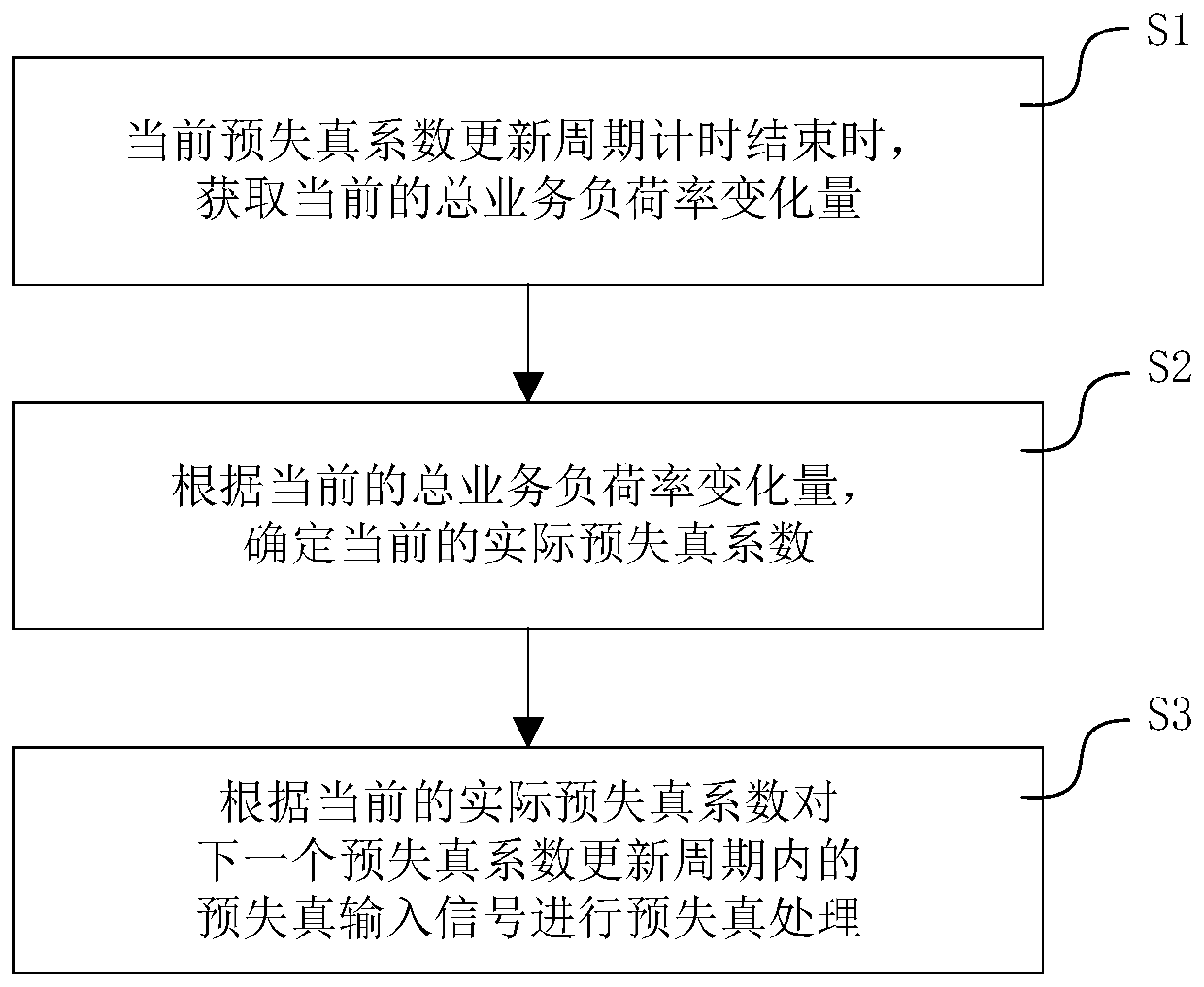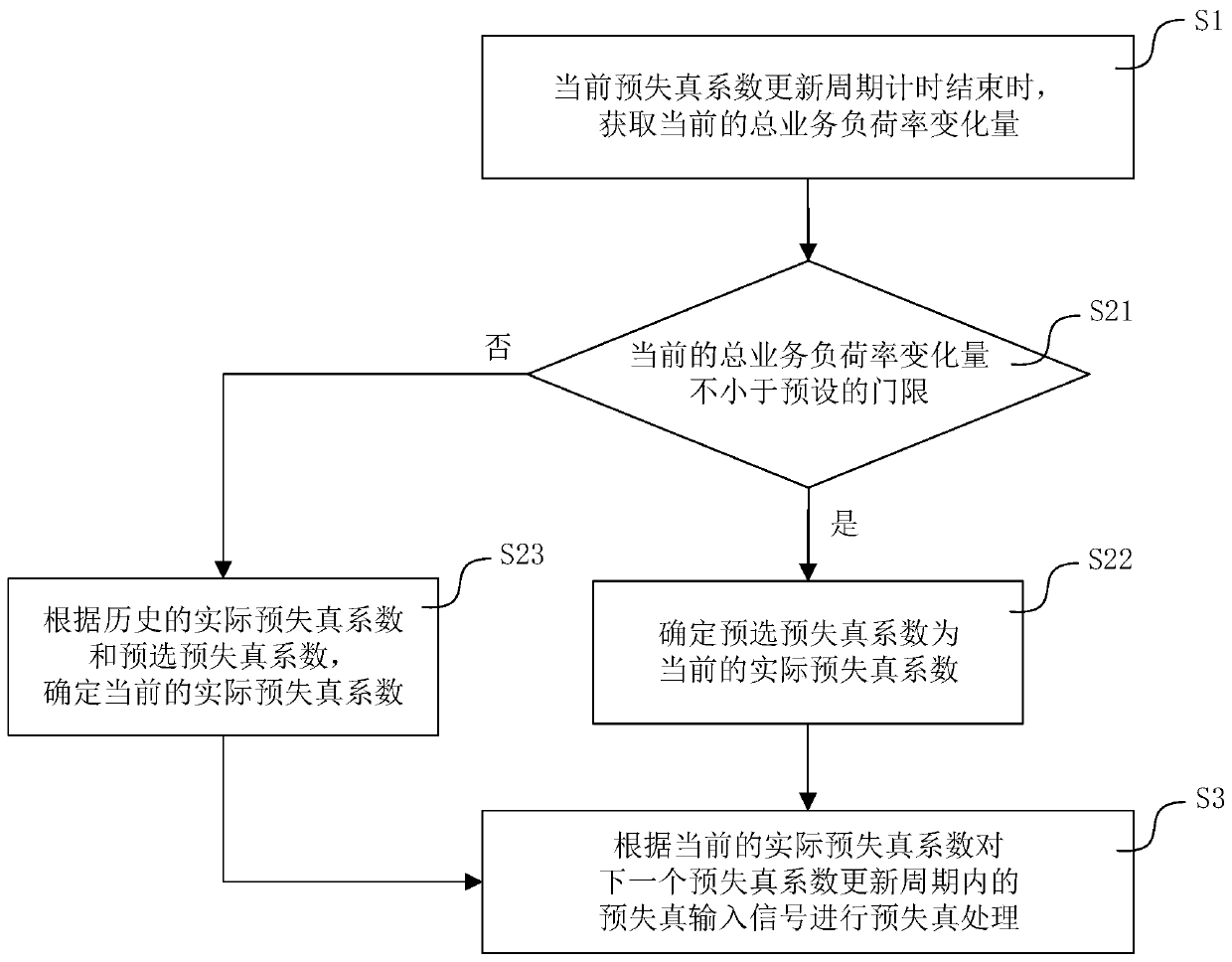Pre-distortion processing method and device, storage medium and equipment
A pre-distortion processing and pre-distortion technology, which is applied in the direction of synchronization/start-stop system, etc., can solve problems such as unbalanced service load rate, influence on pre-distortion effect, and unmatched carrier service load rate, etc., to reduce the impact of pre-distortion stability , the effect of improving performance
- Summary
- Abstract
- Description
- Claims
- Application Information
AI Technical Summary
Problems solved by technology
Method used
Image
Examples
Embodiment Construction
[0066] The accompanying drawings of the present invention are only for illustrative purposes, and should not be construed as limiting the present invention. In order to better illustrate the following embodiments, some components in the drawings will be omitted, enlarged or reduced, and do not represent the size of the actual product; for those skilled in the art, some known structures and their descriptions in the drawings may be omitted. understandable.
[0067] Such as figure 1 As shown, in one embodiment, a kind of predistortion processing method is provided, comprising the following steps:
[0068] S1. At the end of the current predistortion coefficient update cycle timing, obtain the current total service load rate change;
[0069] Specifically, the total service load rate is the ratio of the actual amount of data carried on the bandwidth corresponding to the total service load rate to the maximum amount of data carried. The total business load rate is obtained by cal...
PUM
 Login to View More
Login to View More Abstract
Description
Claims
Application Information
 Login to View More
Login to View More - R&D
- Intellectual Property
- Life Sciences
- Materials
- Tech Scout
- Unparalleled Data Quality
- Higher Quality Content
- 60% Fewer Hallucinations
Browse by: Latest US Patents, China's latest patents, Technical Efficacy Thesaurus, Application Domain, Technology Topic, Popular Technical Reports.
© 2025 PatSnap. All rights reserved.Legal|Privacy policy|Modern Slavery Act Transparency Statement|Sitemap|About US| Contact US: help@patsnap.com



